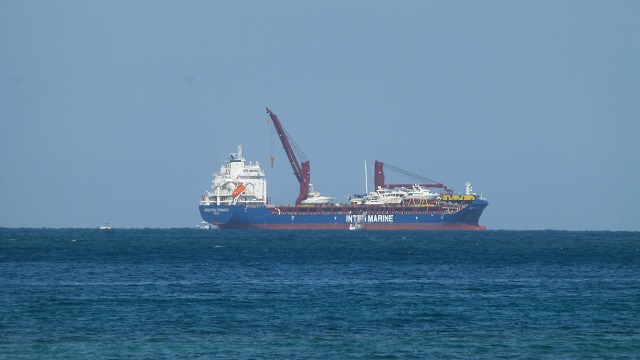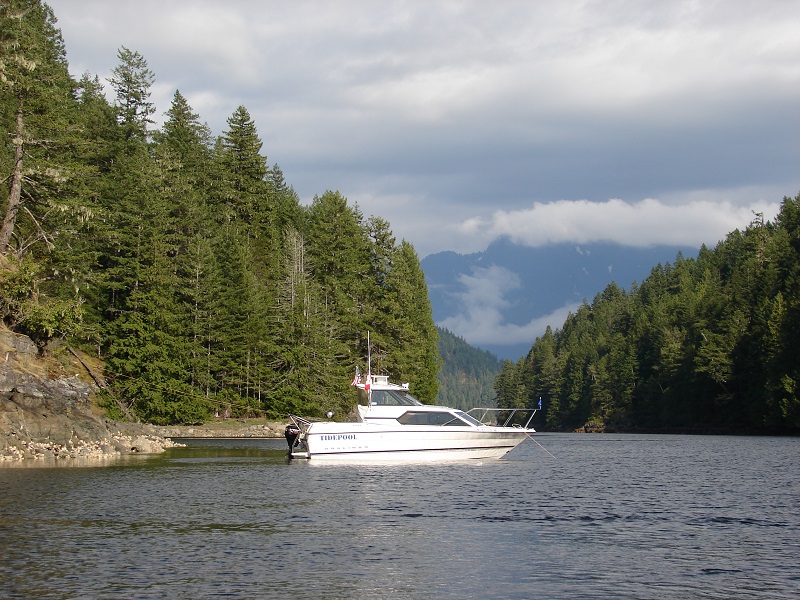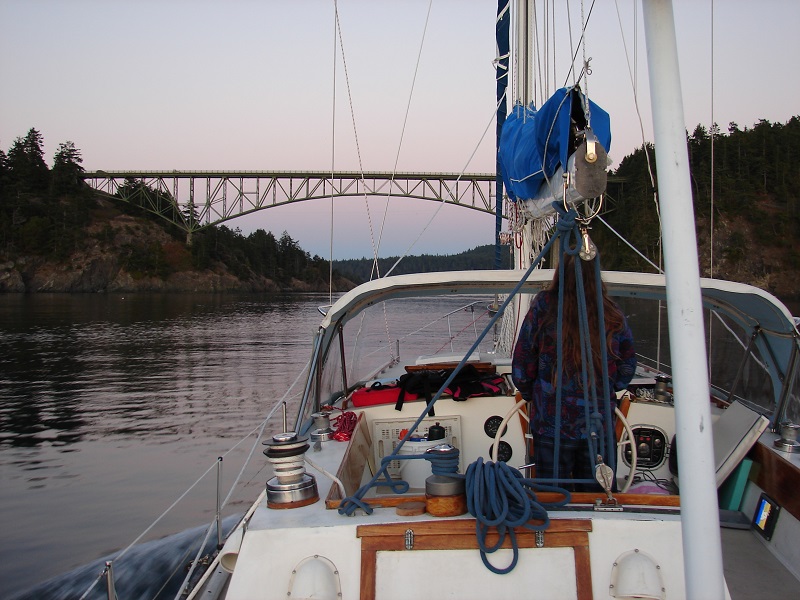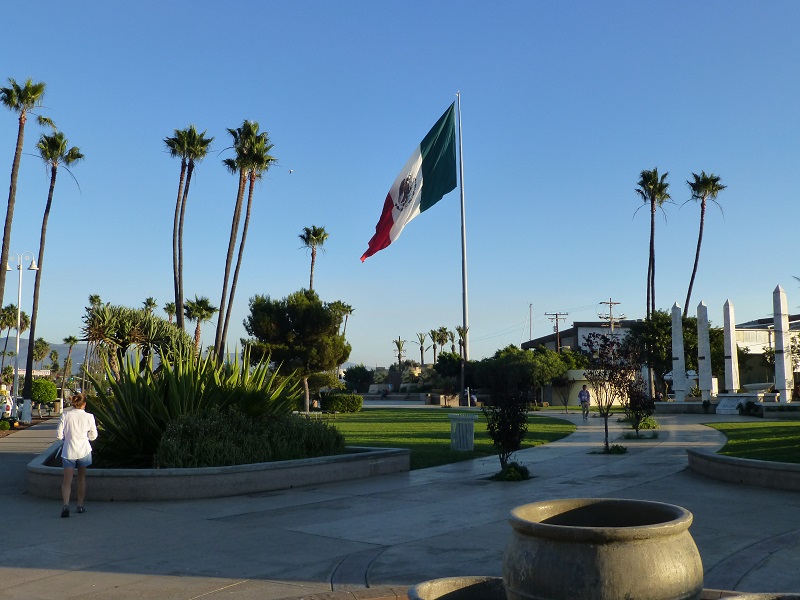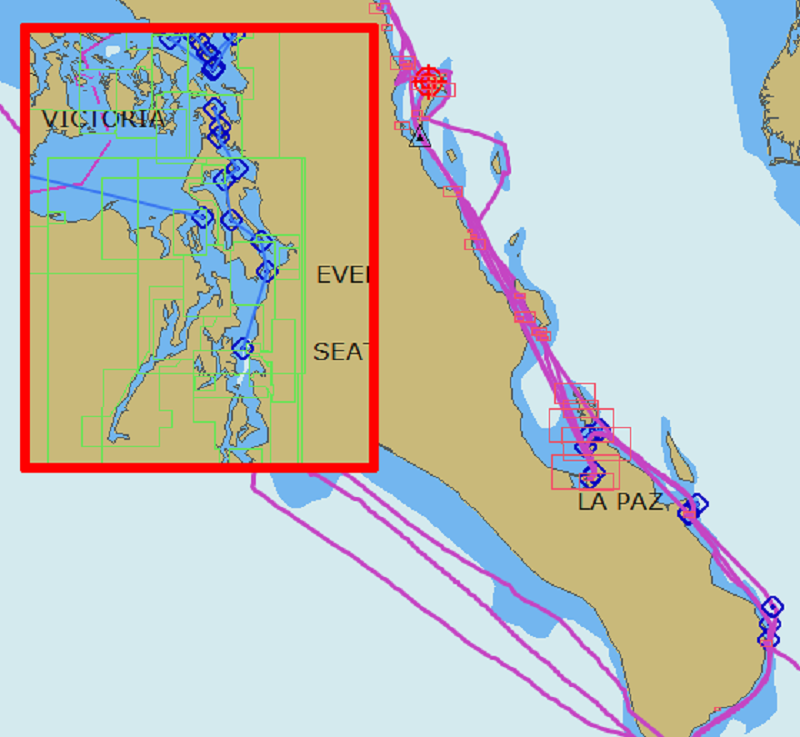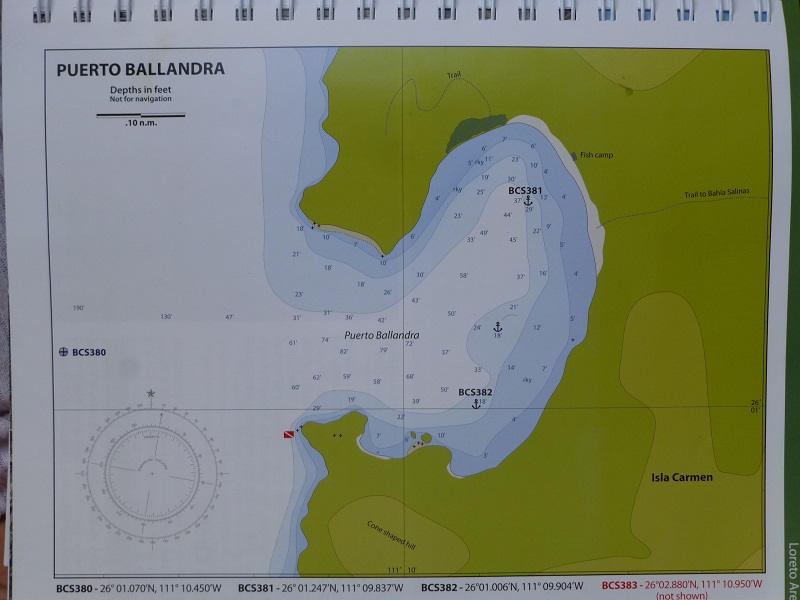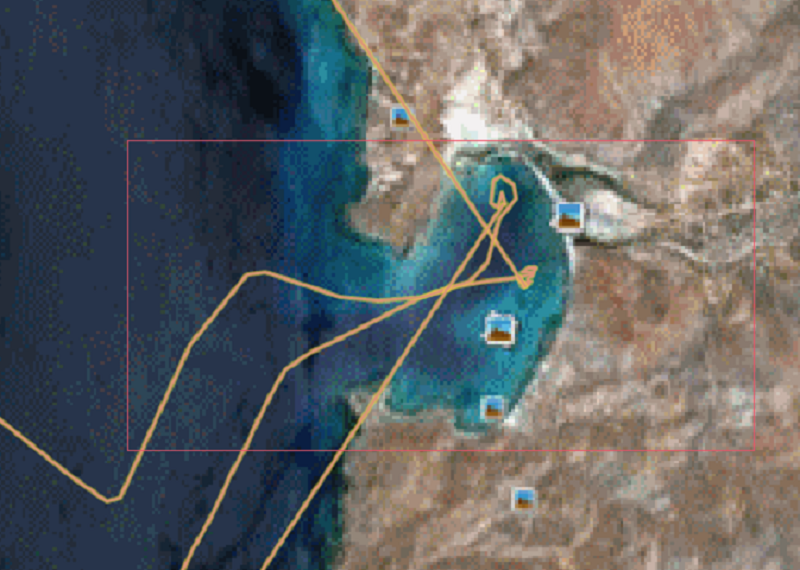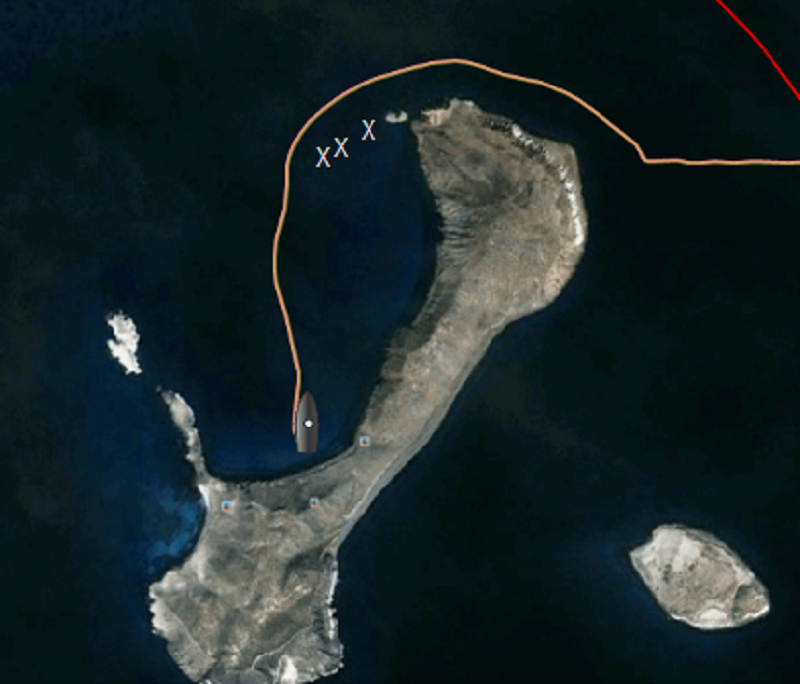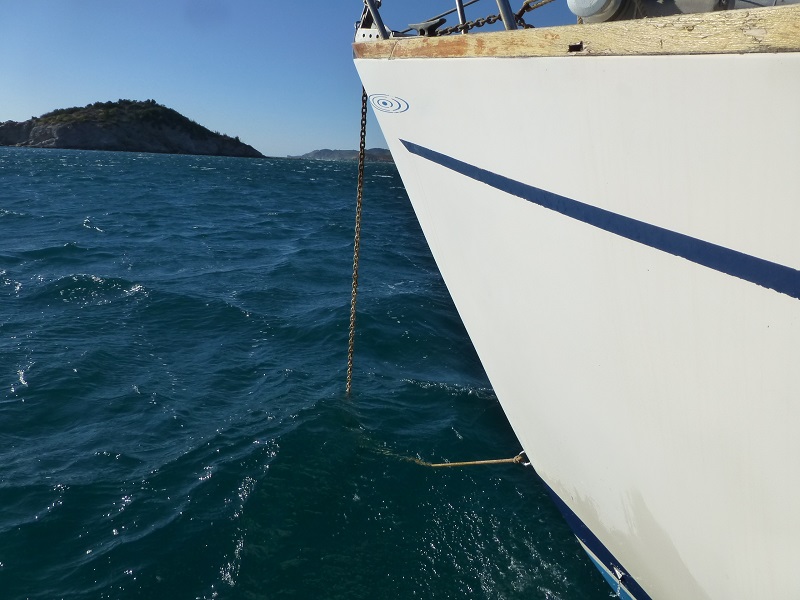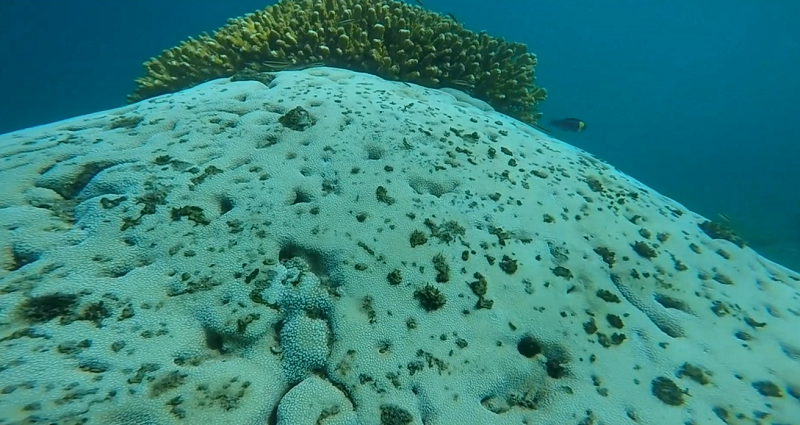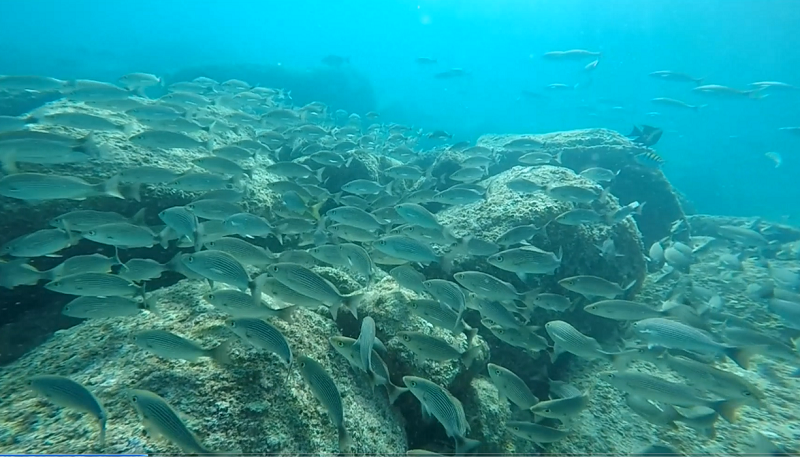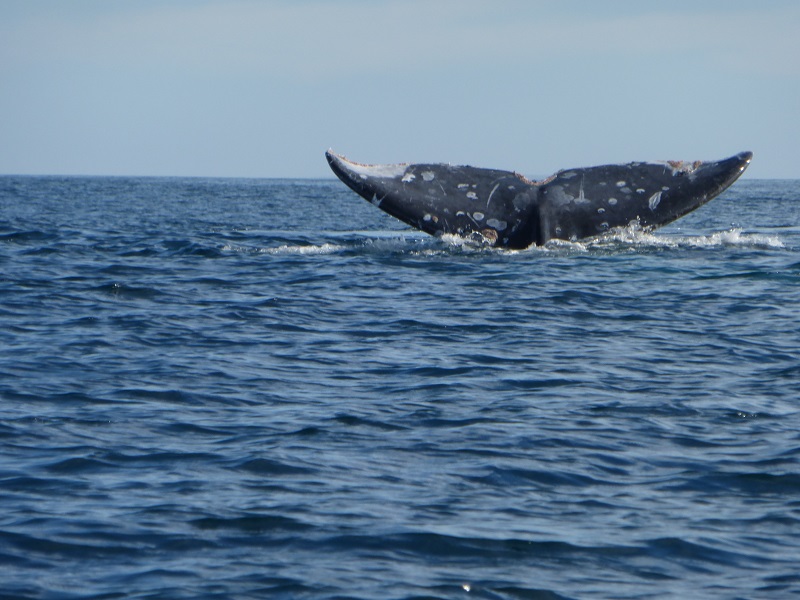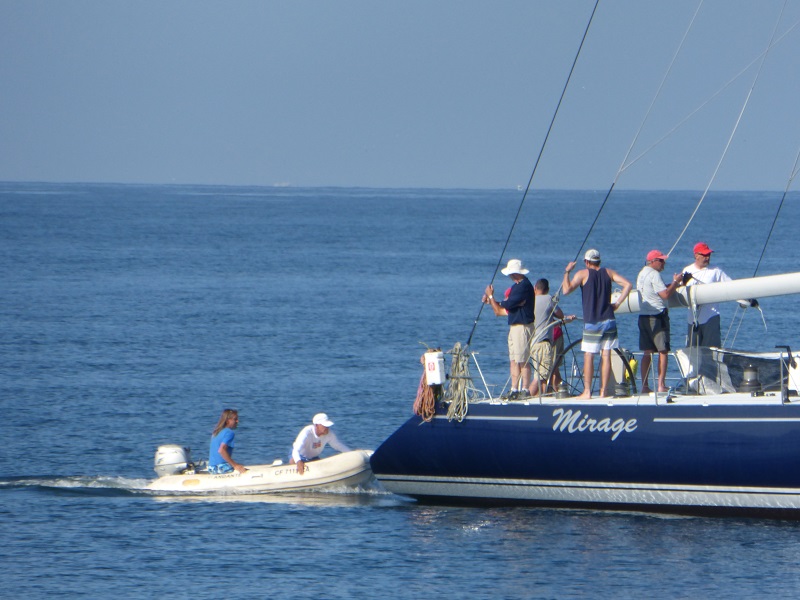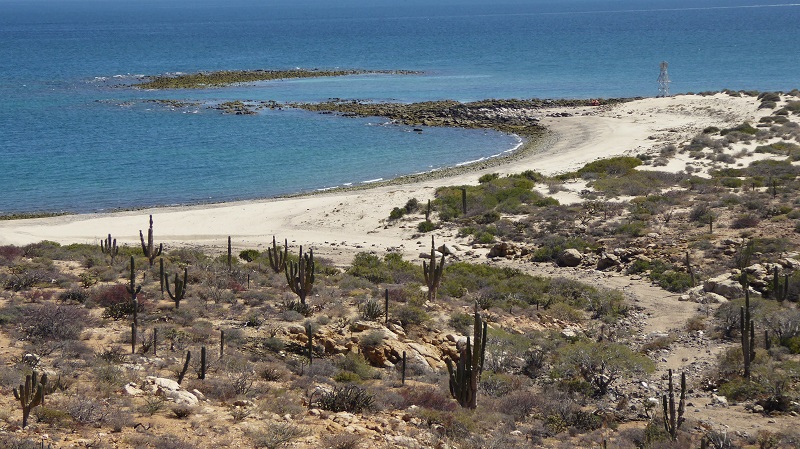
The Mexico trip is long over, Bright Water is sold, and sold again, but we’re still boating in the Pacific Northwest in TIDEPOOL, a 24′ Bayliner we bought new in 1997. TIDEPOOL has all the essentials for PNW boating:
It’s fast so we can beat or mostly ignore tides (cruise at 24-26 kts).
Plenty of range (120 miles or so).
A windshield and heater.
Big windows to overcome winter gloom.
An enclosed head with plenty of tankage.
Separate cooking, eating, and sleeping areas (at least for two people).
We don’t usually post trip photos here, because they’re less epic, but we have been asked to document the boat and the experience, so this will be a longish post.
Nobody would call TIDEPOOL beautiful, but boyoboy is she useful. Her main skill is waiting. She sits on a trailer and doesn’t cost anything at all when we’re not using her (that’s changed at little, see below.) She’s easy to launch and retrieve and work on in a covered barn.

The dingy on the left was the original purchased in 1997 from West Marine. Cheapest PVC rollup they made. The dingy on the right was the replacement purchased in 2019 from West Marine. Cheapest PVC rollup they made. The original was still completely fine, by the way. The PVC was not sun damaged at all. Both get wiped down with 303 UV protectant at least annually.
However, there were many many patches in the tubes from oyster shell cuts, so we started fresh. You can see the Honda 2 outboard on a transom bracket, behind the 4-stroke 15 horse Mercury kicker. The tiny 4-stroke Honda is air cooled, almost trouble-free, very light, and powerful enough to plane either dingy with one person on board.

These dinghies are super-light so they’re easy to carry above the high tide line when we go for a hike.

TIDEPOOL has an enclosed standard marine head and a 20 gallon black water tank. It came with a macerator discharge pump that eventually clogged or wore out or something, so we simply plumbed in a great big ball valve and some big sanitary hose. We only dump in approved/allowed areas, of course. Of course. Absolutely.


TIDEPOOL came with a 5.7L Mercruiser and Alpha sterndrive, with fresh water cooling (antifreeze inside the block, raw salt water cools the antifreeze and exits out the exhaust system). The exhaust risers leaked saltwater into the block after a very few years, so we upgraded to a 5.0L EFI EI engine with the same 260 horsepower and way less trouble and maintenance. I plumbed in a hose connection so we could easily flush the motor with fresh water and pump in antifreeze to winterize it, with the boat still sitting in the salt water. It works pretty good.

The Mercruiser Alpha outdrive is really too small for this boat, but it works. You can tell it’s too small because the biggest prop that fits is way overloaded, so we operate at high slip and we get pretty severe cavitation damage to the prop. It’s easy to stay on top of, though, and props are cheap.



The boat came with cushions to build a settee at the back of the cockpit, over the engine cover. They took up a lot of space and weren’t that comfortable, so we build a platform out of cedar to do the same thing. Very light and comfortable.
Under the cockpit floor, on either side of the engine, are two huge lockers that can hold scuba tanks and gear, the barbecue, all the spare line and rope, fenders, a couple of spare anchors, and God knows what else. Under the nachos is a fish locker that drains overboard, where we store propane cylinders, dinghy gasoline, and other stuff we don’t want inside the hull.
The stainless bracket hanging off the transom is where we store the (inverted) dingy while we’re underway.

We used a Claw anchor until very recently, but the Vulcan is way, way, way better. It’s pretty amazing, but still not flawless. In the PNW, if an anchor drags at all (2-3 feet, even) the throat of the anchor loads up with kelp and won’t dig in and set. Then you have to raise the anchor, clean it out, and try again. Because of tides and currents and wind and weather, you can expect to swing on the anchor almost constantly, so a GPS anchor watch is important. Successful anchoring looks like a ball of yarn.
We carry 8 feet of 3/8 chain and about 150′ of 1/2 nylon 3-strand rode. We also have, I think four spare anchors and a couple spare rodes.


When conditions are right, mostly in Canada and mostly in Desolation Sound, we tie the stern to shore. This makes anchoring much more secure. You need to pay attention and allow for the tides. Sometimes there are actual shore anchors, installed by other boats or left over from logging operations. Other times you throw a line around trees or big rocks. Recently Nancy started swimming the line to shore, which is way easier and faster than using the dingy.


The view from the helm shows (left to right) the RADAR, depth sounder (with fuel flow meter), GPS, Autopilot, Compass, and anti-fog rag.

On the hardtop over the cockpit is the 100W solar panel (MPPT controller is in the cabin) and the radome. We also carry two small sit-on-top kayaks. They’re light and a lot of fun. At anchor, we have a solar shower that sits up here for a quick warm rinse after a swim.
We bought the RADAR pretty early on when we almost drove between a tugboat and it’s barge tow in a medium fog. It’s really a great thing to have.

Down and to starboard, under the dinette settee, is the engine coolant/water water heater (120VAC also). Two group 27 AGMs for house batteries, with the switch and current/state-of-charge meter and isolation switch. This year we’re switching to a LiFePo 100Ah battery that we’ll share (move to and from) with the Sprinter RV.
Electrical Use Ah/24 hours:
Refer 20
Movie 5
Laptop 2
Misc. 1
Total = 28 Ah per day. We get about 20-21 Ah from the solar panel, meaning that we net lose about 8Ah per day. We make that up by running the motor. The new battery should make this better because it charges more efficiently.

Making one big square ice cube uses 0.7 Ah.

This junk gets packed around the batteries and water heater. Mostly tools.

Down and to port is the head.

The dinette is further forward to starboard, with the radio and some storage outboard. It also made a very comfortable double bed for us back in the day when we’d pile the kids and the dogs into the Vee-berth.

A propane catalytic heater stores under the dinette. It’s not the perfect solution, but it stores well and works when we really need it. There’s a ton of food storage under the floor here, and clothing storage inside the forward settee.

Forward to port is the Galley with pressure water, an alcohol “puck” stove (which is great), and a compressor-based 12V Novacool R2600 refrigerator. There was a microwave, but we removed it to claim the storage space (and because we almost never plug the boat into shore power). The shattered glass stove top has been replaced with an aluminum plate. We have a faucet-mounted water filter for drinking water/coffee.

We carry a couple of cases of bottled water in case the 20G water tank goes fouled. We also carry an AquaResearch H2Go water purification device to sanitize water we get from streams and other dubious sources (especially in Desolation Sound). We carry two additional five-gallon water totes for hauling water and when we want more storage. https://store.h2gopurifier.com/products/h2go-purifier-global

Sometimes we beg water from our neighbors in the anchorage.

This is the stuff we store in the V-berth area. There’s also a TV with movies and a homemade (Raspberry Pie) AIS receiver/chart plotter system.





The front of the boat (the bikini deck) is a great place for afternoon snacks.

We made some window shades for a planned trip through the US inland waterways. We went to Mexico on Bright Water, instead, but the sunshades are still pretty great and don’t weigh much or take up much room.

We no longer own a barn in the PNW to store TIDEPOOL in, so we have to rent some barn space at a local marina. It’s working out well, so far. The boat sits on it’s trailer, is plugged in for battery health and moisture/mildew control, and it’s safe from the weather.



The storage yard has a work area where we can go through everything before and after a trip. EZPeazy.

The Pacific Northwest is a great place to go boating. Desolation Sound, in British Columbia, has the warmest water north of Mexico. It’s a great place to spend the end of summer. Here’s a time-lapse (four weeks in four minutes) video from 2011: https://www.youtube.com/watch?v=3TGs7PIUJHo
Here are the checklists:
Here is the packing list:



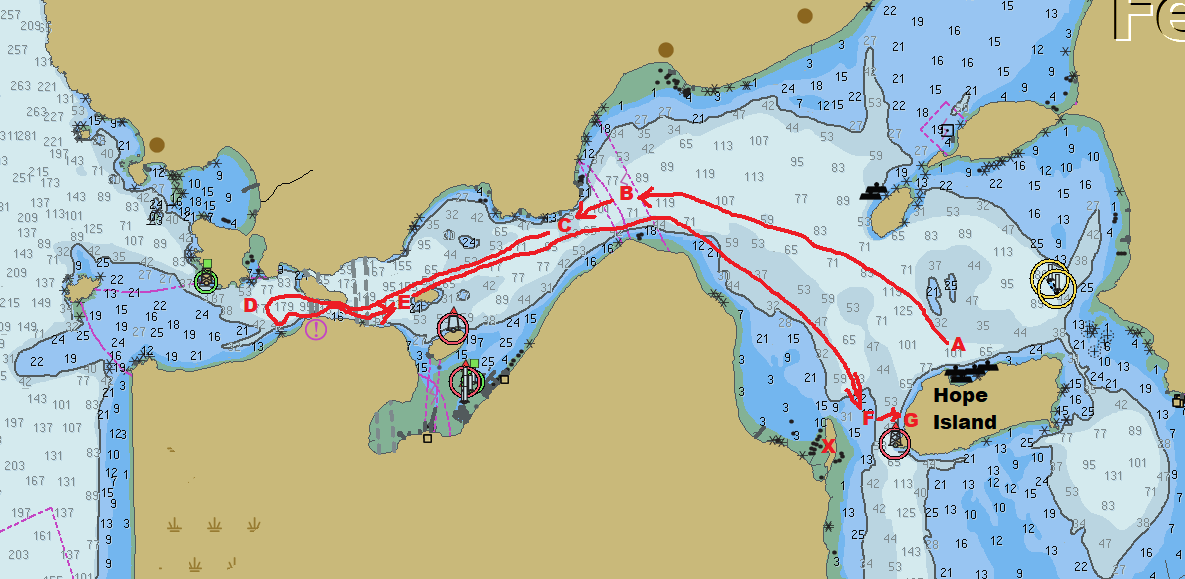

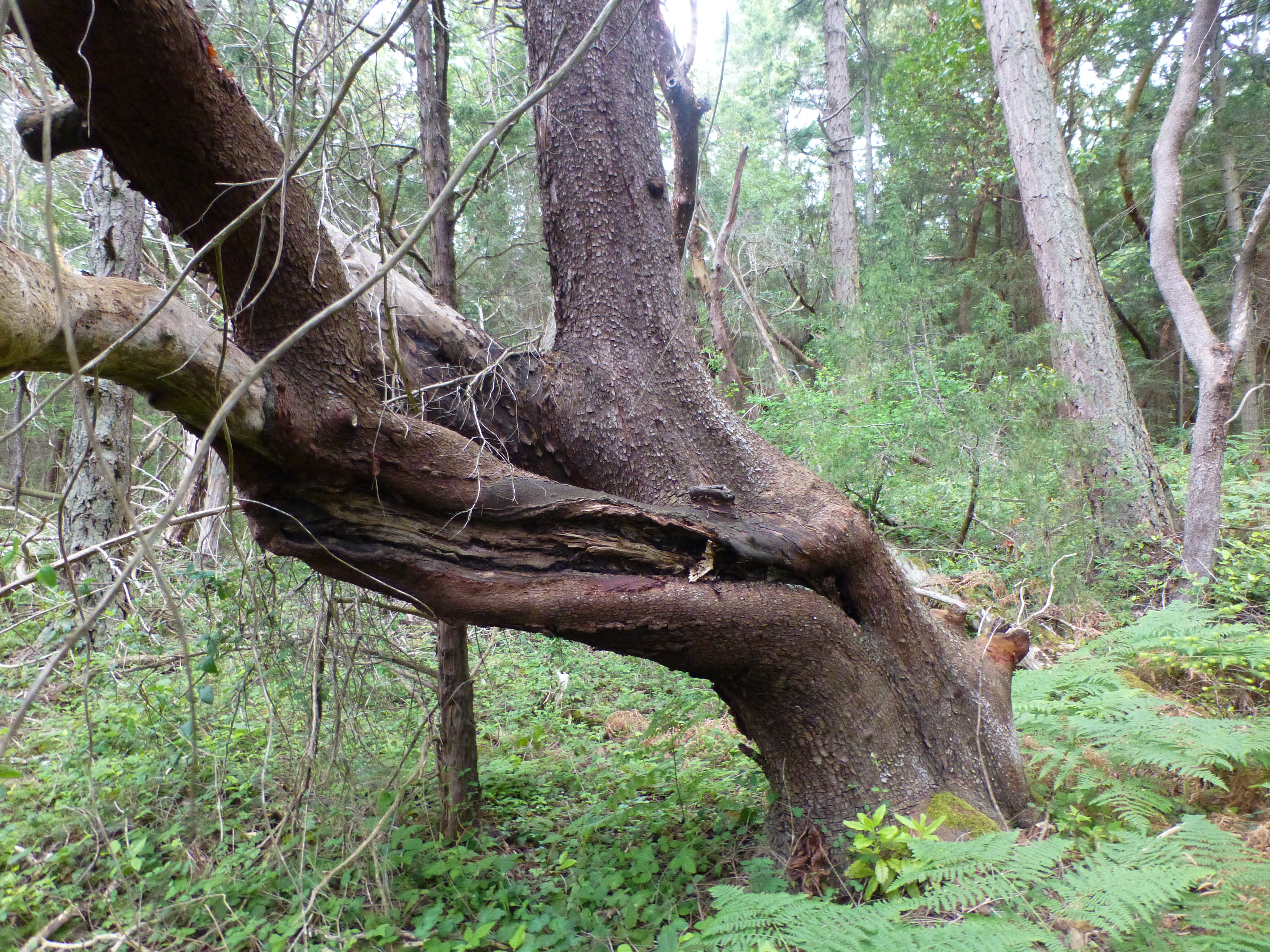



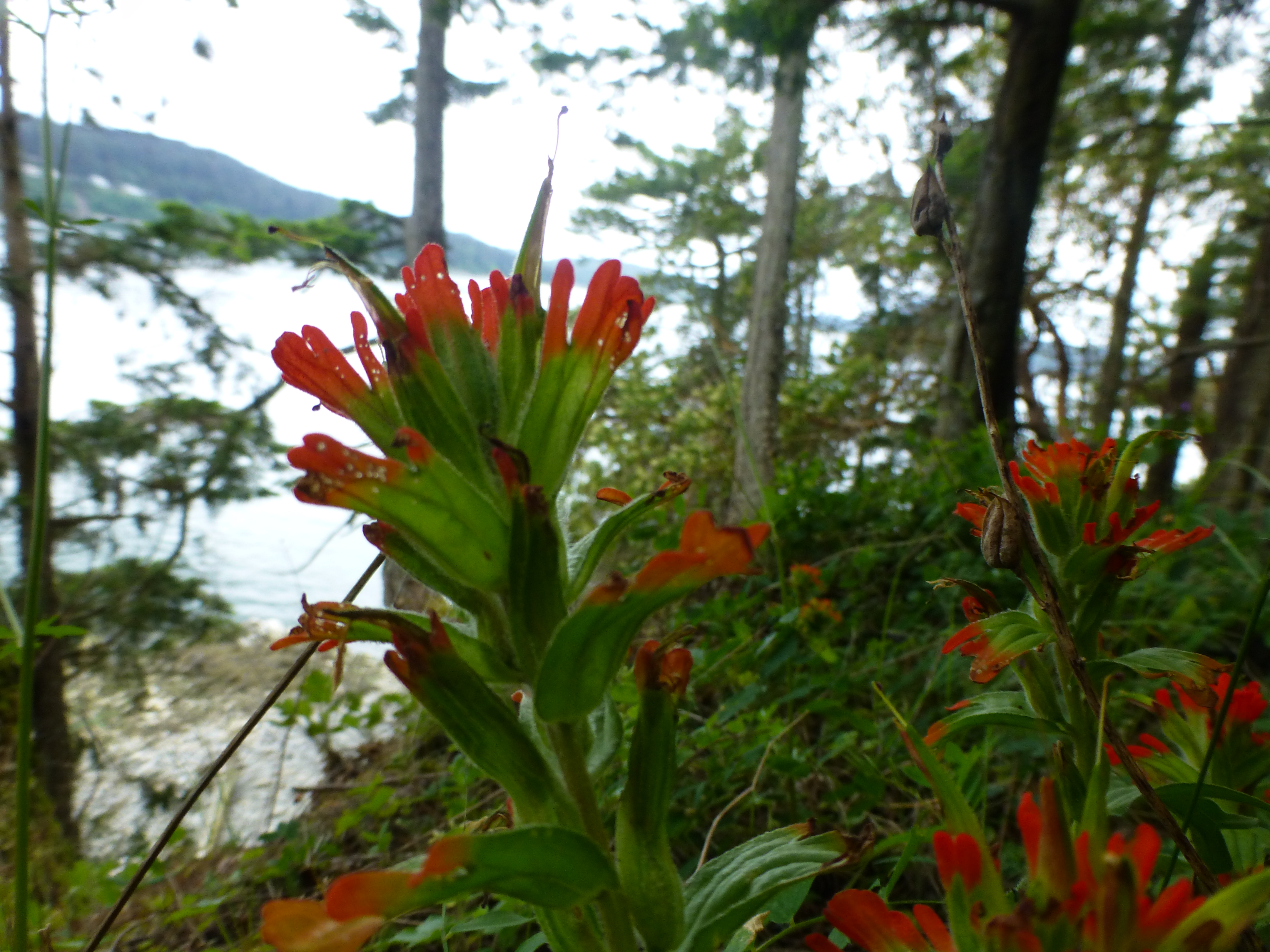


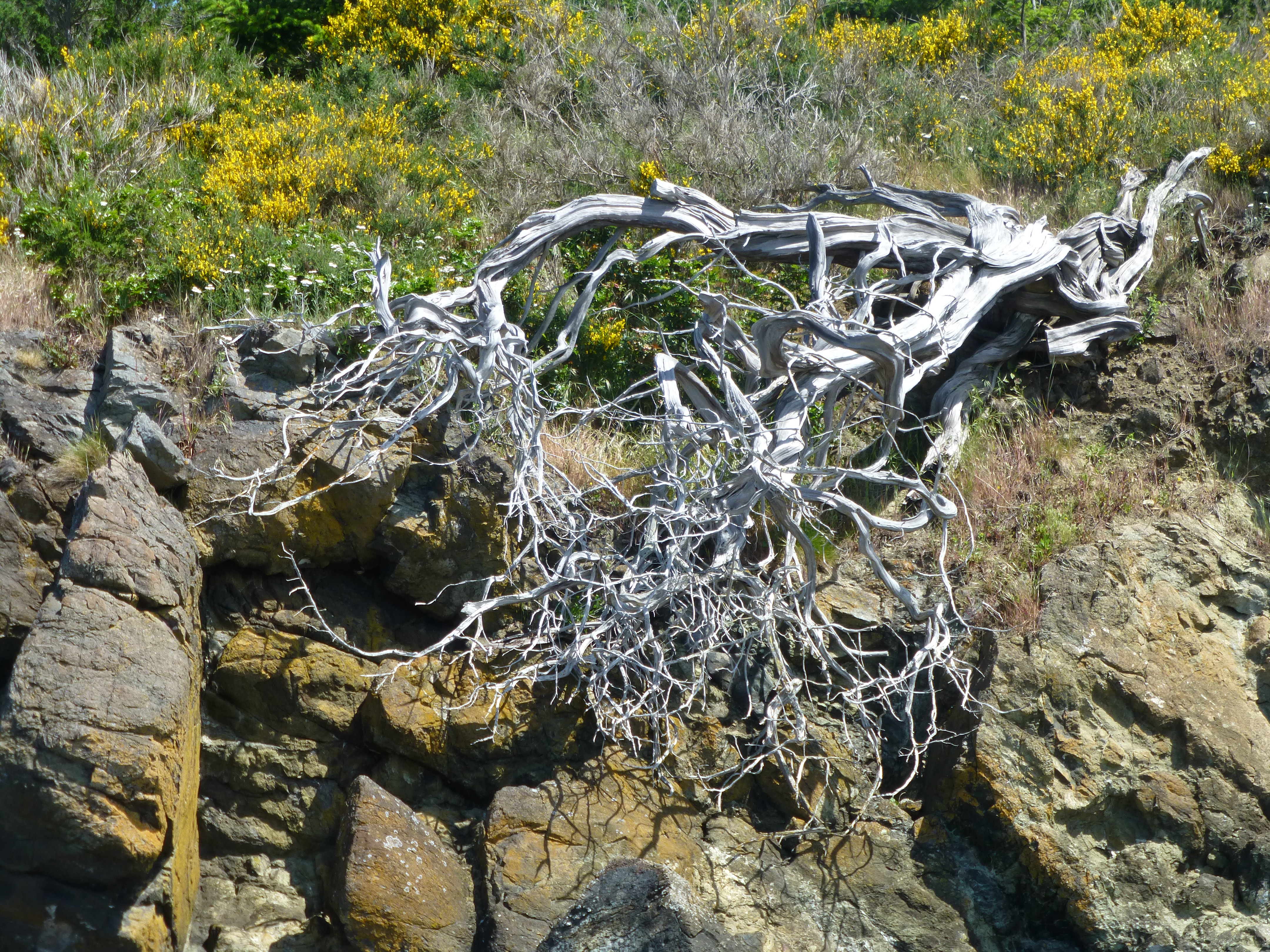




 The h2go purifier turns water and salt (or seawater) into a concentrated sterilizing solution that works like nothing else. It even kills giardia. And…solar power! That’s right. And…a flashlight.
The h2go purifier turns water and salt (or seawater) into a concentrated sterilizing solution that works like nothing else. It even kills giardia. And…solar power! That’s right. And…a flashlight. 